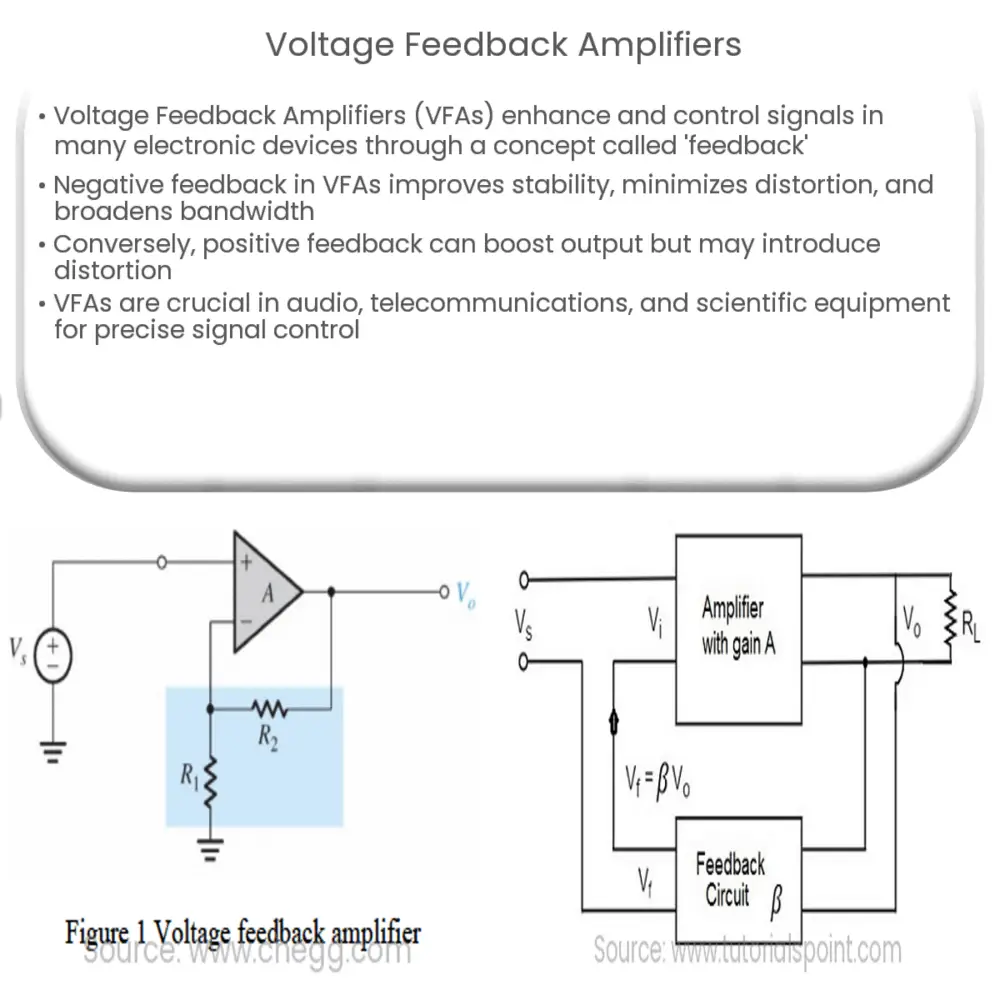Explore the world of Voltage Feedback Amplifiers (VFAs), their working principles, benefits, applications, and role in enhancing electronic devices.

Introduction to Voltage Feedback Amplifiers
Voltage Feedback Amplifiers (VFAs) are a core component of many electronic devices, responsible for enhancing and controlling signals. As the name implies, these amplifiers utilize a concept known as ‘feedback’ to improve their performance and stability.
The Principle of Voltage Feedback
In a VFA, a fraction of the output voltage is ‘fed back’ to the amplifier input, thus the term ‘feedback’. This feedback mechanism allows the amplifier to self-adjust and minimize the output error, creating a more stable, predictable output signal. The feedback signal can either be in phase with the input signal (positive feedback) or out of phase (negative feedback).
Negative Feedback in VFAs
Negative feedback is predominantly used in VFAs, and it’s vital for enhancing stability, reducing distortion, and increasing bandwidth. By ‘feeding back’ a portion of the output signal in an opposite phase to the input, the output signal’s amplitude gets controlled, preventing the amplifier from reaching saturation. This mechanism of action reduces distortion and improves the overall sound quality.
- Improvement in Stability: The negative feedback process decreases the gain of the amplifier, leading to improved stability.
- Reduction in Distortion: It decreases the non-linear distortion by making the gain less dependent on the transistor’s operating point.
- Increase in Bandwidth: Negative feedback also increases the bandwidth of the amplifier, thereby enhancing the range of frequencies the amplifier can effectively process.
Positive Feedback in VFAs
Conversely, positive feedback increases the gain of the amplifier and can cause the amplifier to reach a state of ‘saturation’ or maximum output quicker. This feature can be advantageous in some applications, but it can also result in increased distortion and instability. The feedback signal in this scenario is in phase with the input signal, resulting in a boost of the output signal’s amplitude. This property can be useful in applications like oscillators where a large output is desired.
It’s important to note that the design of VFAs is a balancing act between gain, bandwidth, and stability, which is made possible by the feedback mechanism. The following section will delve into the inner workings of a Voltage Feedback Amplifier, shedding light on its circuitry and operational principles.
Inner Workings of a Voltage Feedback Amplifier
At its core, a Voltage Feedback Amplifier consists of two main parts – an amplifier section and a feedback network. The amplifier section typically includes a differential amplifier and a power amplifier. The feedback network, usually a simple resistor network, determines the proportion of the output signal that is returned to the input.
- The Amplifier Section: The amplifier section is where the initial amplification of the input signal takes place. The differential amplifier acts to amplify the difference between the input signal and the feedback signal. The power amplifier then further amplifies this signal to the desired output level.
- The Feedback Network: The feedback network determines how much of the output signal is fed back into the input. By changing the feedback network’s components, we can control the feedback amount and thereby, the overall gain of the Voltage Feedback Amplifier.
Applications of Voltage Feedback Amplifiers
Voltage Feedback Amplifiers find applications in numerous electronic devices due to their capability of accurately controlling signal amplification. They are widely used in audio equipment, telecommunication devices, and even in advanced scientific equipment. For instance:
- In audio systems, VFAs help to maintain the quality of the sound signal, reducing distortion and preventing saturation.
- In telecommunication systems, VFAs are used in the design of filters, oscillators, and other signal processing devices.
- In scientific and medical equipment, VFAs are often used in sensitive equipment that requires precise signal amplification and control.
Conclusion
In conclusion, Voltage Feedback Amplifiers are integral to the functioning of numerous electronic devices. By using feedback, they are able to control the amplification of input signals, thereby ensuring stability, reducing distortion, and enhancing the operational bandwidth. The simple yet powerful design of VFAs provides us with a reliable and precise method for signal amplification, and they remain a cornerstone technology in electronics.


